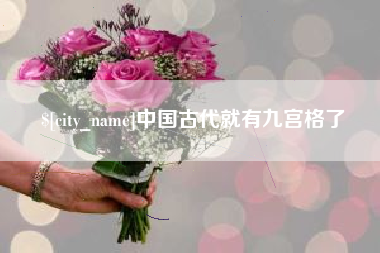黄山中国古代就有九宫格了
导读:在中国传统文化中,九宫格是一个古老而有趣的智力游戏。相较于其千变万化的形式变化,它的真正魅力源自于其深厚的文化底蕴和智力刺激。下面,就来分享一些关于中国古代的九宫格的知识和技巧。九宫格游戏的核心是在一个小方格内排列九...
在中国传统文化中,九宫格是一个古老而有趣的智力游戏。相较于其千变万化的形式变化,它的真正魅力源自于其深厚的文化底蕴和智力刺激。下面,就来分享一些关于中国古代的九宫格的知识和技巧。
九宫格游戏的核心是在一个小方格内排列九个数字,要求每行、每列和两条对角线之和都为15。这不仅是一项数学游戏,更是一种锻炼思维、提高逻辑思维能力的方式。

游戏的起始步骤:
- 将数字1至9填入小方格中;
- 每行、每列和两条对角线上的三个数字之和必须为15;
- 一旦排列正确,每个小方格可以根据其数值来代表不同的含义或象征。
技巧和策略:
- 在游戏中,我们可以先找出图表中的两数之和为特定值的地方,以此逐步推断其他数字的位置;
- 在每排的起点可以试试设置一个关键数字,然后通过试错法或排除法来填充其他空格;
- 如遇到卡壳情况,可逆推回上一步骤,重新调整排列方向;
- 使用试验与错误的方法也是成功的关键之一,尤其是在游戏刚开始时并未形成整体的视觉图像。
互动学习和挑战:在我们的网站上,隐藏着一种独特的福利——你可以尝试实地操作九宫格。通过真实的体验空间,点击领取隐藏福利,你可能会发现更科学合理的解决策略。此外,多尝试不同的数字排列方式能够增加你对九宫格多样性和复杂性的理解。
理解和深入:在掌握这些基本规则和技巧后,你不妨思考一下其背后更深的文化内涵。比如,古人认为宫格是将大千世界万物归一的象征,这样的权力象征也体现在了现代的立体九宫格结构设计中。利用这些象征符号能培养你达到心潮和谐、守中悟道的精神状态。
就不怕重复困难,挑战那种“片刻千万思惟尸訏秒杀”的抖擞精神吧!通过九格格的考验,你会发现每一道难题最终都会成为你发现问题、思考问题、解决问题的力量源泉。不容许放弃,邀请你开启这场古老且充满智慧的数字旅行吧!